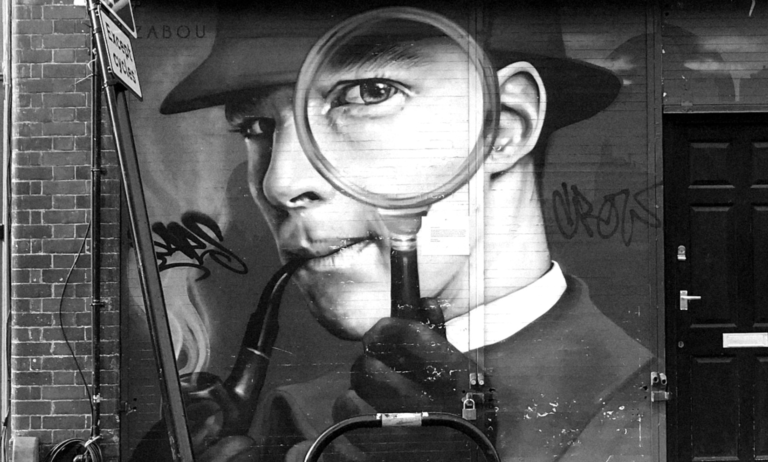The Thirwall Inquiry: Inquisitorial By Law
An NHS Insider writes about the Thirwall Inquiry and how it will be an opportunity for Countess of Chester Hospital executives to tell their side of the story. They also point out that each of the 22 deaths and collapses in the Letby case had plausible medical and scientific explanations that did not involve intentional harm.
The Statutory Inquiry announced by the Government and to be chaired by Lady Justice Thirlwall into the circumstances surrounding the murders of babies at the Countess of Chester Hospital is to be welcomed on a number of fronts. Whilst it will be distressing for the parents of the babies involved, it will provide the opportunity to explain and understand the events within the hospital that led to the trial and convictions. Indeed, the work of the Inquiry has now begun but because of other legal processes in train Lady Justice Thirlwall has confirmed that the hearings will not start until September 2024.
The terms of reference are now known. Whilst it will not be about replaying the trial, in reality it will be difficult for the inquiry not to provide a full and proper explanation of the context and environment in which Lucy Letby found herself at the time. Indeed, the non-exhaustive list of indicative questions confirms the engagement of parents in relation to their experience (e.g., What were the parents of each child told about the likely cause of death or injuries? When and by whom?)
One of the three broad areas of inquiry requires an investigation of “The conduct of those working at the Countess of Chester, including the board, managers, doctors, nurses and midwives with regard to the actions of Lucy Letby while she was employed there as a neonatal nurse and subsequently, including: (i) whether suspicions should have been raised earlier, whether Lucy Letby should have been suspended earlier and whether the police and other external bodies should have been informed sooner of suspicions about her, (ii) the responses to concerns raised about Lucy Letby from those with management responsibilities within the trust…”
In particular, and in response to the above area of inquiry, it will hopefully provide the opportunity to arrive at a more balanced narrative and conclusion than the one which is currently playing out which seeks to blame the former management team for the tragic events whilst praising the hitherto unheard and unsung role of the whistleblowing consultant paediatricians. This is too facile an approach and narrative. A narrative which the current NHS top leadership, in its inimitable style, has been all too quick to run with. There must be every expectation that given Lady Justice Thirlwall’s background (she chaired the Airedale Hospital Inquiry in 2010) she will bring the right and proper perspective to this and not simply leave the former management out to dry and tell the NHS, yet again, that it needs to listen ever more attentively to its whistleblowers and pursue some form of regulation of NHS managers (not forgetting the fact that each of the former management leadership team were health professionals and each subject to their own regulatory body including in a leadership/managerial role).
Royal College of Paediatrics and Child Health Report, November 2016
Any right and proper perspective needs to start with the RCPCH Report which the former management team led by Tony Chambers, the former Chief Executive, commissioned. Whilst its importance and relevance has been dismissed by another former Chief Executive of the Trust, Dr Susan Gilby, as a simple service review with terms of reference that “did not include looking at the circumstances of these babies’ deaths and collapses”, it was much more than that as any considered review of its findings would demonstrate.
A very specific term of reference required the review team “to consider concerns about the Neonatal Unit with specific reference to – are there any identifiable common factors or failings that might in part, or in whole, explain the apparent increase in mortality in 2015 and 2016?”. In relation to this requirement, its overall conclusion was that “the Review team agreed that there were no obvious factors which linked the deaths and that circumstances in the unit were not materially different from those which might be found in many other neonatal units within the UK”.
Reinforcing this conclusion the Review team explained that:
“Since June 2015 the paediatric consultants have become concerned about a higher than usual number of neonatal deaths on the unit, several of them being apparently (my underlining) ‘unexplained’ and ‘unexpected’. (Gap in report, may be due to redaction)… Most of these infants had post-mortem examinations, all cases have been reviewed by the mortality and morbidity meeting (M&M), and one had undergone a Root Cause Analysis review. On 8th February 2016 a half-day ‘high level’ thematic review of ten (my underlining) of the cases took place with the involvement of the ODN clinical lead. A summary internal review of the nursing observations, staffing and junior doctor rotas for the 12 hours before the deaths was then conducted. No definite causal correlation was identified between the various cases; however a number of recommendations (such as new UVC guidance) resulted from the high-level review.”
Although not clear from the redacted version of the report, the Health Service Journal references an unpublished addendum to the RCPCH report in which it is stated that specific concerns about Lucy Letby had been raised by the neonatal lead and consultants but described them as “subjective” and based on “simple correlation” and “gut feeling”. Further reporting
Further reporting of the redacted passages includes the following paragraph confirming that the review team had been specifically asked to consider their concerns about Lucy Letby:
“The neonatal lead (Stephen Brearey), in an effort to be thorough and explore all possibilities had identified that one nurse had been rostered on shift for all of the deaths although the nurse had not always been assigned to care for that specific infant. Subsequently the paediatric lead and all consultant paediatricians had become convinced by the link. Although this was a subjective view with no other evidence or reports of clinical concerns about the nurse beyond the simple correlation an allegation was made to the Medical Director and Director of Nursing.
“On arriving for the visit the RCPCH Review team was told that the nurse had been moved to an alternative position around ten weeks previously without explanation nor any formal investigative process having been established. The Review team was told that the individual was an enthusiastic, capable and committed nurse who had worked on the unit for four years. She herself explained to the Review team that she was passionate about her career and keen to progress. She regularly volunteered to work extra shifts or change her shifts when asked to do so and was happy to work with her friends on the unit. The Directors understood that there was nothing about her background that was suspicious; her nursing colleagues on the unit were reported to think highly of her and how she responded to emergencies and other difficult situations, especially when the transport team were involved. There were apparently no issues of competency or training, she was very professional and asked relevant questions, demonstrating an enthusiasm to lead along with a high level of professionalism.”
At the time of the RCPCH Review team visit (September 2016) and upon publication in February 2017 of their report that was dated November 2016, what might a reasonable objective bystander conclude? They might conclude that it could only be what the report authors and the former senior management team of the Trust concluded themselves at the time, namely that there was no causal relation between the incidents. Surely it would be impossible to conclude anything else at that time in face of the reviews which had been undertaken and the reasonable conclusion that the views of the paediatric consultants were based on a “simple correlation” and “gut feeling” which seems to have been the case. Indeed, it is difficult to follow Dr Brearey’s explanations that by October 2015 when there had been five unexplained deaths which he had associated with Lucy Letby being on duty at the time, when considered in the context of the 8th February 2016 ‘high level’ review cited by the RCPCH Review team of ten cases; there being more deaths in the period than the five which Dr Brearey associated with Lucy Letby and which she was subsequently convicted of. Indeed, if it were more than “gut feeling” why did Dr Brearley leave his high-level thematic review until February 2016, several months after the cluster of the summer 2015 deaths?
In addition to a number of findings and recommendations about sub-optimal standards of the unit which it recommended needed to be addressed before it could return to a Level 2 Local Neonatal Unit, the leadership team in July 2016, at the same time as commissioning the RCPCH review, had reversed the status of the unit to a Level 1 unit, no longer caring for babies before 32 weeks.
Importantly, the RCPCH Report recommended that “in order to thoroughly examine the issues detailed case reviews of all the deaths (prioritising the unexpected deaths) should be conducted by an independent expert. The personnel issues cannot be resolved formally until this is completed”.
This review was commissioned by Mr Ian Harvey (Medical Director) and was to be undertaken by Dr Jane Hawdon of Great Ormond Street.
Dr Jane Hawdon’s Review
Whilst the RCPCH Report is available in the public domain, the Hawdon Report is not available despite a FOIA request. Nevertheless, the Health Service Journal has stated that it has seen a redacted version of the report. It is reported that Dr Hawdon explained that she could not conduct a detailed review because of lack of time but could provide a summary and did so following a case note review. She identified four cases that would benefit from local forensic review. This review did not take place.
In the absence of sight of the report, it is not clear whether the four cases that should have been reviewed related to the deaths for which Lucy Letby was convicted. Bearing in mind that the majority (all but one) of the cases for which Lucy Letby was convicted were subject to post-mortems it may be reasonable to conclude (assuming Dr Hawdon was satisfied with the post-mortem evidence and any subsequent Coroner’s verdict) that the deaths recommended for forensic review came from the cohort of deaths for which Lucy Letby was not charged. We shall have to wait and see.
Dealing with Lucy Letby’s Grievance
At the time when the reviews were being undertaken, the management team were also dealing with the personnel issues surrounding the handling of Lucy Letby. In September 2016, Lucy Letby had been told about the consultants’ concerns at which point she submitted a formal grievance about her being removed from ward duties.
The outcome of the grievance investigation was reported to the consultants in January 2017 confirming that the grievance had been upheld and that Lucy Letby would be returning to work. The Consultants were made to apologise to Lucy Letby.
Involvement of the Police
In March 2017, Tony Chambers (CEO) and Ian Harvey (Medical Director) agreed that the high mortality rates and suspicions should be raised with the police through the local child health review panel.
The police investigation into high mortality rates was announced in May 2017 in a statement: “The Trust and its doctors have continuing concerns about the unexplained deaths and are very keen to understand that everything possible has been done to help determine the causes of death in our neonatal unit between June 2015 and June 2016… We have now asked for the input from Cheshire Police to seek assurances that enable us to rule out unnatural causes of death.”
What the Trust Board was told
At its meeting on 7th February 2017, the minutes of the Board meeting held in public confirm that Tony Chambers “stated that the Board will be aware that in July 2016, clinicians raised concerns regarding an increase of deaths in the neonatal unit. The unit changed the admission criteria and the Trust invited the Royal College of Paediatric and Child Health (RCPCH) to undertake a review. The RCPCH suggested a more in-depth independent review be undertaken which had been completed. The Independent case review highlighted some areas for improvement but did not identify a single causal factor or raised concerns regarding unnatural causes.”
It was also reported at the July 2017 Board meeting held in public that the Trust had asked Cheshire Police to investigate the increased mortality rate on the neonatal unit and that the investigation was underway.
It is also highly likely that there would have been more discussion within the private Board meetings at that time, the minutes of which are not made public and for which an FOI request has so far not been made.
Subsequently, the former chair of the Trust, Sir Duncan Nichol, has gone on record as saying that the board was misled when it received a report on the outcome of the external, independent case reviews. He says that “We were told explicitly that there was no criminal activity pointing to any one individual, when in truth the investigating neonatologist had stated that she had not had the time to complete the necessary in-depth case reviews.” Of course, it is very unlikely that Dr Hawdon would have been able to point to any “criminal activity”, although she did recommend a more detailed review of four of the deaths and as noted, in the absence of sight of Dr Hawdon’s report, it is not clear whether the four cases were associated with Lucy Letby.
It is not clear whether the board was told of the recommendation to review four of the cases in more detail, and if this was not the case then it is regrettable. Nevertheless, Tony Chambers has gone on record as saying that “what was shared with the board was honest and open and represented our best understanding of the outcome of the reviews at the time.” In any event, surely it was for the chair and the “unitary” board to have sought sufficient assurances to satisfy itself of all the facts. Subsequently, the board was appraised formally at its July 2017 board meeting that the matter had been referred to the police.
The Appointment of Dr Susan Gilby and a change in narrative
It was not until Dr Susan Gilby was appointed as Medical Director to the Trust on 1 August 2018 and as Acting Chief Executive Officer in September 2018, following Tony Chamber’s departure the same month, that the narrative began to change. Dr Gilby is on record as saying that from her review of the papers about the neonatal unit she felt that the Trust had bungled its response to a series of unexplained deaths and collapses and that “within 10 minutes (of a meeting with Dr Brearey).. it was very clear that what he was describing were not expected collapses or deaths…and nothing they had done so far had certainly explained it.”
It is at this point that the narrative changed. It is reported that one Trust source has said that Dr Gilby convinced the rest of the board that the paediatric consultants were right, and several board members felt they had been misled by the previous executive. Dr Gilby had herself been a member of the executive management team that had “blown the whistle” on certain members of the board when she was Medical Director at Wirral University Teaching Hospital.
Conclusions – the actions of the former senior leadership and management team at the time
In responding to its key term of reference, namely about the conduct of the board and senior leadership team at the time and “whether suspicions should have been raised earlier, whether Lucy Letby should have been suspended earlier and whether the police and other external bodies should have been informed sooner of suspicions about her…” the Inquiry would do well to place itself in the shoes of the senior leadership team at the time and avoid too much hindsight bias. It was appropriate to commission the report from the RCPCH and it is clear from the redacted version that is available that they were asked to consider the suspicions about Lucy Letby and concluded “that there were no obvious factors which linked the deaths and that circumstances in the unit were not materially different from those which might be found in many other neonatal units in the UK”. Further, in February 2016 even the ‘high level’ thematic review, involving Dr Stephen Brearey, of ten of the cases did not identify any causal correlation between the various cases. Yet despite this Dr Brearey has said that the concerns he raised in October 2015 went unheeded.
At the time of commissioning the RCPCH report, the senior leadership team in response to concerns about high activity and acuity levels downgraded the status of the unit. They also followed through on a key recommendation of the RCPCH report and commissioned Dr Hawdon’s report, although did not follow through on her recommendation to review four of the cases in more detail (although as noted it is not clear whether the four cases related to Lucy Letby). Following resolution of Lucy Letby’s grievance, concerns were raised with the police through the local child health review panel in March 2017.
Of course, it would not be unjustifiable to consider that this case and its circumstances stretch credulity. Tony Chambers is reported as being concerned for Lucy Letby and being worried about a wrongful conviction. Even Dr Brearey thought that it could not be “nice Lucy”. There are a growing number who are concerned that this may be an all too familiar miscarriage of justice based entirely on circumstantial evidence and expert witness testimony that is open to medical and scientific challenge.
Credulity is stretched when you consider that one of the worst serial killers turns up in Chester, a hitherto acknowledged competent and compassionate nurse first appointed to the unit in 2012 who then goes on a killing spree in 2015 and 2016 using a range of modus operandi – e.g., killing a baby by air embollis within thirty minutes of having arrived on duty and in a busy room with many other staff present, attempting to murder two babies with insulin who according to expert witness testimony must have been contained in a spiked TPN bag with insulin, moreover not just having spiked one TPN bag as she had had foresight to see that the first bag would “tissue”. Credulity is even further stretched when you consider each of the individual cases and the more plausible medical and scientific explanations that can be provided for each of the deaths.








I feel that someone has watched too many murder mysteries and that there ‘Gut’ feelings has overlooked the overall fact that the sickest babies were being treated in a less than optimal environment .
Did someone mention Horizon…..
Every time I read the details it amazes me that this even got to court, let alone ended in a guilty verdict. I sent an email to the Thirwall Enquiry email address directing them to the scienceontrial site and your previous site and pointing out that one way or another the verdict will inevitably be overturned at which point a public enquiry that had failed to acknowledge serious doubts about the case from authoritative sources would be a huge embarrassment to everyone involved with it. Hopefully Justice Thirwall has her wits about her.